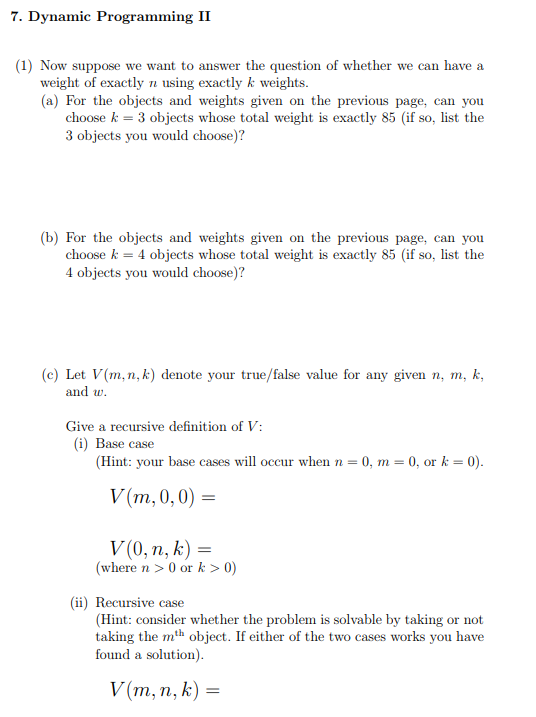Answered step by step
Verified Expert Solution
Question
1 Approved Answer
Part 1: https://www.chegg.com/homework-help/questions-and-answers/6-dynamic-programming-suppose-array-w-m-positive-integers-integers-represent-weights-vario-q32456102 7. Dynamic Programming II (1) Now suppose we want to answer the question of whether we can have a weight of exactly
Part 1: https://www.chegg.com/homework-help/questions-and-answers/6-dynamic-programming-suppose-array-w-m-positive-integers-integers-represent-weights-vario-q32456102

Step by Step Solution
There are 3 Steps involved in it
Step: 1

Get Instant Access to Expert-Tailored Solutions
See step-by-step solutions with expert insights and AI powered tools for academic success
Step: 2

Step: 3

Ace Your Homework with AI
Get the answers you need in no time with our AI-driven, step-by-step assistance
Get Started


